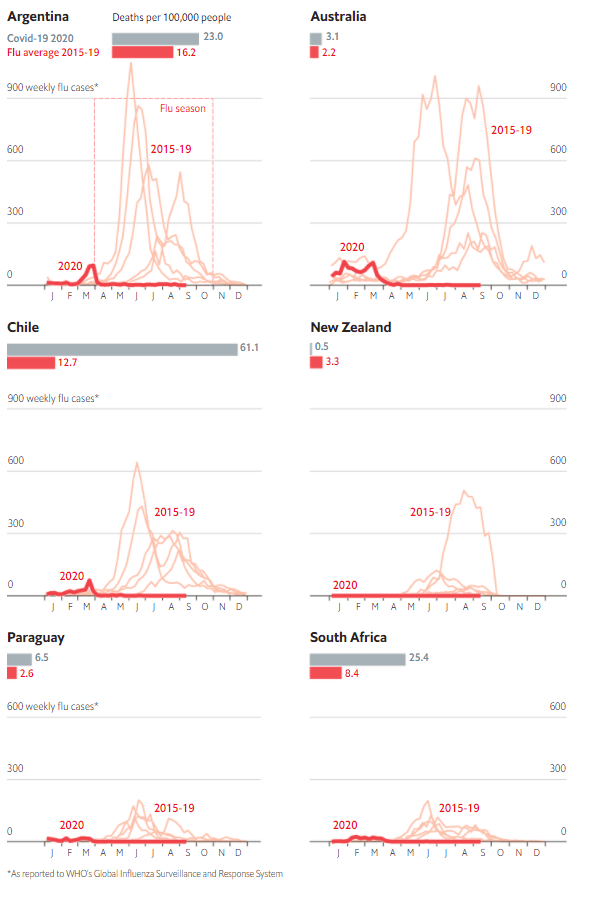Flu Season During A Pandemic: Preventing It’s Spread & Contraction
Flu season is one of the longest, busiest seasons for illnesses in the country.
From the start of flu season until the eventual “end”, healthcare systems around the world will be on heightened alert. In the US alone, the Centers for Disease Control (CDC) estimates that anywhere between 34,000 and 43,000 people die annually due to complications brought on from the flu.
For this current flu season, we have the added worry of COVID-19.
Despite the uncertainty, apprehension, and worry surrounding the 2020 flu season, it may not be as bad as we initially predicted.
CDC Data Reveals Sharp Declines In Positive Flu Tests
According to a report from the CDC, data from the Southern Hemisphere suggests a mild flu season for the United States.
Further Positive Impacts of COVID-19 Social Guidelines
Health officials say that there’s been a massive drop in flu and respiratory illness-related cases in Australia, Chile, and South Africa during June, July, and August; the months that account for the typical influenza season in the Southern Hemisphere.
In an effort to reduce the spread of the coronavirus, many countries have implemented strict social restrictions and have announced guidelines to slow it’s spread. These guidelines and restrictions include, but aren’t limited to:
- Maintaining a minimum physical distance from other persons
- Increasing the frequency that hands are thoroughly washed
- Requiring the wearing of a mask for social gatherings and outings
Though these guidelines were put in place to help halt the spread of SARS-CoV-2 (COVID-19), they’ve helped to mitigate the spread of other contagious diseases, including the flu virus, resulting in a steep decrease of people contracting the flu.

Improving Flu Outcome in the United States
The effect rings true for the United States as well. The CDC’s report continues to say that there was a significant decrease in the number of flu tests submitted during the 2019-20 flu season due to the lockdown restrictions. Additionally, of the tests submitted, there was a 98% decrease in influenza activity.
While certain social distancing restrictions have been lifted in some states, following the coronavirus guidelines, such as simply wearing a mask and washing your hands properly, will help to further reduce the transmission of viruses like COVID-19 and the flu.
The pandemic has proven to be difficult for the entire world, and especially for healthcare professionals. Despite the hardships that we’ve all undoubtedly faced, flu-related data reported from countries in the Southern Hemisphere are welcoming and provide a note of encouragement, and reveals that the safety measures that we’re taking are working.
How to Further Reduce The Risk of Contracting the Flu
While things are still uncertain, there are high hopes that our country will experience an improved flu season.
Despite the mild flu season that so many are hoping for, we still need to work together to slow the spread of the flu virus, and be proactive in educating people on the importance of flu shots, while breaking down common misconceptions, and encouraging patients to take action this year.
When’s the Best Time to Get Vaccinated?
According to the CDC, September and October are the best months to get vaccinated for the flu.
It’s more important than ever to make sure that people are getting the flu shot now, while we are early in the flu season.
Getting immunized now lowers the likelihood of needing to go to the hospital later; freeing up invaluable resources that hospitals need to combat another potential COVID-19 surge.




